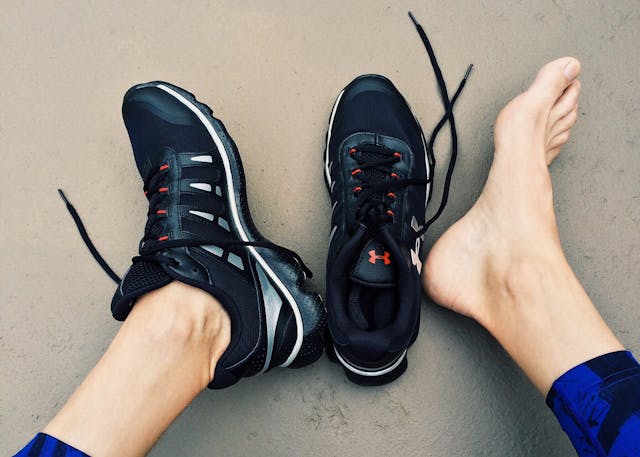
What are blisters and calluses? A blister is a pocket of body fluid that has formed between the outer layers of skin in response to damage. A callus is an area of thickened skin that has been formed to protect the skin from damage.
The word “blister” came into English from the old French “blestre”, and it probably came into French from the Old Norse “blastr”, which meant to blow or to swell. The word “callus” came from the Latin “callum”, which meant hard skin. The word “callous” has the same origin.
Both blisters and calluses are the body’s attempt to protect itself from damage. Most of us get blisters on our feet from ill-fitting shoes sometimes, but they can form anywhere, and they are in response to damage. Severe burns can cause blisters, as can being frozen. The types of blisters you get on your feet and burn blisters are a little different, although they are both caused by damage to the skin. When you are burned, the heat damages the outer layer of skin, the epidermis, and it separates from the layer underneath. Fluid leaks out of the capillaries, and the blister forms. If you have a blister on your foot, it is also caused by damage to the skin, but that damage has most likely been caused by prolonged rubbing from the inside of the shoe.
Shoes don’t fit our feet perfectly. Even well worn in shoes aren’t perfect. If you walk for a long time, the parts of the shoe that don’t perfectly match your foot will rub against the skin of the foot. This friction applies force to the cells in the skin, and they can shear off from the skin cells beneath them. When the skin shears away, the body reacts to the shock by releasing fluid from the capillaries into the gap. This fluid is there for several purposes. Firstly, it acts as a cushion against any further injury and protects the site. Secondly, the fluid is plasma, and it contains proteins and immune cells to fix all of the damage and encourage new cells to grow. It will take a while, but if you leave the blister alone, the plasma will fix the damage, and then the fluid will be absorbed back into the body. We want to pop blisters, but keeping the fluid where it is so it can do its work is definitely the best thing to do. Blisters are more likely to form if your feet are moist or wet because the water softens the skin. Softer skin is more pliable and is less resistant to friction damage. If you are walking a long way and you get wet feet, or you are sweating a lot, it is a good idea to change into dry socks.
Calluses are connected to blisters because they tend to form in an area of skin that is exposed to constant friction. In the beginning, the friction will cause a blister, but if the skin doesn’t have time to heal, a callus will form. We have a lot of calluses on our feet because of the constant contact with our shoes, but people who work with their hands a lot might get calluses there. A callus is the body’s way of protecting itself from damage. The friction rubs and shears the outer layers of skin. If the friction continues, the body reacts by hanging onto dead skin cells. Our skin is constantly being regenerated from underneath, and the dead outer layers are rubbed off while the new fresh layers come up from underneath. In a callus, the body stops shedding the dead skin. To do this, it makes a network of protein and keratin. Keratin is the substance that makes up our hair and our nails. It is a strong and resistant protein. The keratin mixes with other proteins and makes a mesh of filaments. This mesh attaches to the layers of dead skin and anchors them to the living skin underneath, keeping them in place. It is a shield of dead skin that the body is holding up. The calluses appear yellow or white because the dead skin cells are so thick that you cannot see the blood flowing below them, which is what gives our skin its color. And this is what I learned today.
Sources
https://www.health.harvard.edu/a_to_z/friction-blisters-a-to-z
https://en.wikipedia.org/wiki/Blister
https://en.wikipedia.org/wiki/Callus
https://en.wikipedia.org/wiki/Keratinocyte
https://www.etymonline.com/word/callus
https://www.etymonline.com/word/blister
Photo by Pixabay: https://www.pexels.com/photo/black-under-amour-sneakers-163535/
